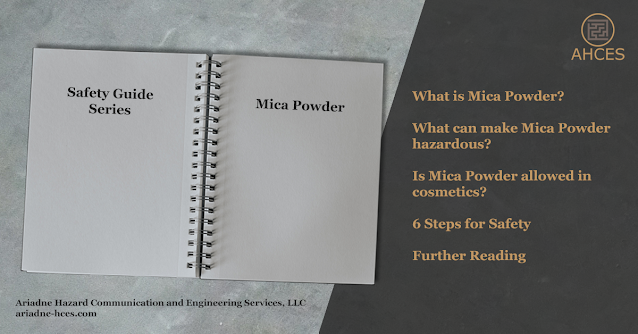Introduction to the EPA Safer Choice and Design for the Environment Standard
What is the Safer Choice Standard?
The Safer Choice and Design for the Environment Standard (SCDfES), previously known as the Safer Choice Standard prior to regulatory updates in August 2024, is a regulatory standard by the EPA. This standard sets the requirements that a product and its ingredients must meet to be marked with a "Safer Choice" label or the "DfE" logo. This marking is meant to indicate to consumers that the product and its ingredients are safer for both human health and the environment compared to un-marked alternative products.
Brief Introduction to the EPA
The EPA is the Environmental Protection Agency, an independent agency of the United States government and is not part of any specific department. It was established in 1970. The EPA develops environmental regulations that determine compliance with environmental laws passed on a federal level. These regulations are also enforced by the EPA.
The EPA is also instrumental in conducting research on environmental issues, including giving grants related to protecting human health and the environment.
Safer Choice For Consumers
A "Safer Choice" label indicates to a consumer that the labeled product should be safer for both their own health and the environment when compared to an equivalent non-labeled product and when used properly. This can include intentionally using ingredients that are not toxic to aquatic environments or are human carcinogens.
It is important to remember that a "Safer Choice" label does not mean that the EPA endorses a product, only that it fits the given criteria in the Safer Choice Standard.
The "Safer Choice" label can be a good tie breaker when choosing between two products. It is possible for a non-"Safer Choice" label product to be safe for human health and the environment, but the labeling process makes to more objective as to what actually is measurably better.
Safer Choice For Manufacturers
Getting a product labeled with the SCDfES is a way for manufacturers to prove that their product guaranteed is better for human health and the environment, per the EPA, as compared to formulations that do not meet the standard.
Many consumers will preferentially select "Safer Choice" or "DfE" labeled products. Some government agencies and companies even have policies requires that cleaning products and pesticides used on the properties must be labeled, which creates a strong customer base for the product.
How Does a Product Receive a Safer Choice Label?
The Safer Choice and Design for the Environment Standard is a voluntary program that a manufacturer may choose to join.
The complete formulation of a product is assessed by an EPA approved third-party profiler. A manufacturer cannot perform the final assessment themselves. The third-part assessor and the manufacturer will then communicate about potential areas for improvement, even safer alternatives, or any other needed information. The manufacturer may need to reformulate the product and go through further assessment prior to finalization.
Once the product formulation is complete and the third-party assessment on the final formulation has been performed, the product and assessment are submitted to the EPA. The EPA performs its own analysis on the third-party assessment to confirm if the product actually meets the SCDfES. If so, the manufacturer can then enter a partnership agreement with the EPA, and the appropriate Safer Choice.
How Does a Product Receive a DfE Certification?
The Design for the Environment (DfE) Certification is run through a joint effort of two EPA offices, the Office of Pollution Prevention and Toxics (OPPT) and Office of Pesticide Programs (OPP). This means a manufacturer looking for DfE Certification has to submit applications to both of these offices.
OPPT Requirements
For OPPT approval, the product must meet the DfE certification criteria as stated in the Safer Choice and Design for the Environment Standard (SCDfES).
Eight ingredients have already been approved as having met DfE certification criteria. These are citric acid, hydrogen peroxide, l-lactic acid, ethanol, isopropanol, peroxyacetic acid, sodium bisulfate, and chitosan. If a product is made up of only these ingredients, it meets the OPPT requirements as DfE.
There may be more ingredients that met the qualifications, but that have not gone through the full review and registration process. Manufactures may contact OPPT if they think they have an active ingredient that can be considered for addition to the listing.
OPP Requirements
The OPP requires that all inert ingredients and mixtures
within the given product are already accepted elsewhere within the requirements
of the OPP. The product also cannot have unresolved reporting related to
adverse effects, efficacy failures, or any problems with compliance or
enforcement actions. This means that a product must be proven to be both safe
and effective.
Further Reading
Sources Cited
Environmental Protection Agency. (2025b, May 8). Design for the Environment (DfE) Certification: Information for Registrants. EPA. https://www.epa.gov/pesticide-labels/design-environment-dfe-certification-information-registrants
Environmental Protection Agency. (2024, October 2). Learn About the Safer Choice Label. EPA. https://www.epa.gov/saferchoice/learn-about-safer-choice-label
Environmental Protection Agency. (2025, March 31). Steps to Get the Safer Choice Label on Your Product. EPA. https://www.epa.gov/saferchoice/steps-get-safer-choice-label-your-product





Comments
Post a Comment